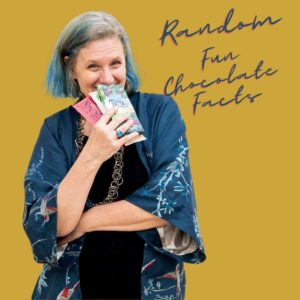
What happens when you keep following something that you are passionate about? Your curiosity brings you so many things to learn! Cacao is my spirit animal (so I’ve been told). So learning about chocolate has become my passion. (Is it yours too??) Following what interests me, I’ve come across some odd tidbits. After reading these random fun facts about chocolate, you’ll be able to sound like an expert at parties. Your friends will be impressed, I’m sure.
Fun Facts about Chocolate: it’s good for you

Example of a cacao pod on a tree, and a pod freshly opened to show the seeds.
Chocolate comes from fruit. A cacao tree grows pods – or the fruit, and inside those pods are seeds (aka beans). The seeds/beans are then processed into candy or hot/cold drinks. The tree is called “Theobroma” or “food of the gods.”
Don’t confuse the sugar rush! Chocolate in its purer state has a ton of feel-good ingredients: tryptophan (which helps the body release serotonin and endorphins). Cacao contains several antioxidants including polyphenols and Phenylethylalanine. These are known to reduce anxiety, depression and work with the dopamine in your brain. Cacao also has high levels of iron – which could be a reason why women crave it during parts of their cycles . The best ingredient is theobromine. This is a mild stimulant (there is no natural caffeine in chocolate) adding to the overall euphoria effect.
In the beginning
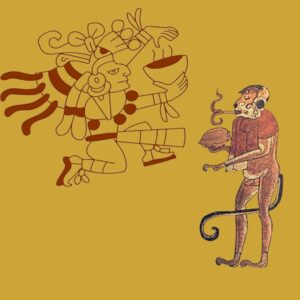
Mesoamerican peoples have been reported to have used cacao for over 34 centuries. The first cacao trees were found in the Amazon River basin and the Venezuelan and Colombian Andes. The Olmecs (early Mayans) were the first peoples to eat and drink chocolate, since 1400BC to 400BC! According to ancient beliefs, cacao (“kakawa”) predates human history. As the creation myth goes, after people were created from maize, they received precious foods. This includes cacao that the gods discovered at “Sustenance Mountain.”
The Aztec Emperor Montezuma, may have consumed 50 cups of xocolatl (“bitter water”) per day. Rumor has it he would drink from gold goblets, throwing each used one away. Chocolate is considered an aphrodisiac partly because of the myth which Montezuma drank cacao to be able to satisfy his harem. He was considered quite wealthy, as his cacao warehouse held up to a million beans.
Chocolate was once money that literally grew on trees. In Mayan times cacao beans were used as currency and were considered to be worth more than gold dust. In the 1540s, 100 cacao beans could buy a slave, a turkey, three rabbits, 33 avocados or 100 tomatoes.
Fun Facts about chocolate and pirates
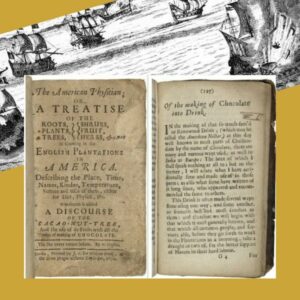
William Hughes, a trained botanist, spent several years as a low-level privateer sailing the Caribbean where he spent hours learning about the local plants, foods and peoples
In 1502 Columbus and his son were apparently aware of cacao beans, but thought they were a bitter almonds. They may or may not have brought some back to Europe*. It was later (1528), under the conqueror Cortes, whom the Aztecs had predicted would come and treated him as a prophet, that a ship filled with Mexican treasures was sent to Spain. However, it could have been Guatemala Maya nobles who brought “a receptacle of beaten chocolate” in 1544 to Prince Philip of Spain. Spain kept the magical drink a secret for about 100 years.
In 1579 English buccaneers burned a shipload of cacao beans mistaking them for sheep droppings. In 1585 Dutch pirates threw a load of cacao overboard an ambushed Spanish galleon – also thinking they were sheep poop!
Pirates, who were busy establishing Port Royale in Jamaica to become their hedonistic headquarters, brought chocolate with them from the “Spanish Main.” Many trees in Jamaica today can be traced genetically to the other ports along the sea routes.
As a low ranking pirate/privateer with an interest in botany in the 1640s, William Hughes, would spend hours ashore learning about the local Caribbean plants and the indegenous people who lived there when he was supposed to be gathering food for the ship. After returning to England, he wrote about his encounters with cacao and chocolate drink. Hughes published The American Physitian in 1672, one of the first eyewitness English-language accounts of cacao planting and production.
Puritans preferred chocolate over beer

New England Colonists loved their chocolate – and often knew the countries of origin of their cacao. The map is of cacao routes of the time.
American Colonists/Puritans/Pilgrims (mid-1600s-1700s) regularly drank cacao or used it in their meals (especially breakfast – added to bread and other options). It was smuggled it from the Caribbean and South America to get around the English “Navigation Acts.”
In 1670 Dorothy Jones and Jane Barnard were granted the first approvals to serve “Coffee & Chucaletto.” Their public entertainment houses were just outside Boston, in what was considered a fancy part of town.
From Pennsylvania to New Amsterdam up to Boston in the late 1600s, the main Colonial processors of chocolate were Jewish or Quaker. Back then, buying prepared food was tricky – you didn’t know what was going to be in it. The Jewish had excellent reputations for their cleanliness as butchers. The Quakers had reputations for purity. Plus Colonists often knew who they were buying from. (Side note: Hershey came from a Quaker family).
Some like it cold
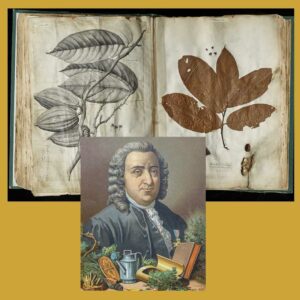
Sketch of cacao tree (by a Dutch artist, also collected) and plant pressing in book by Sir Hans Sloane. In front is a painting of Carl Linnaeus, who studied Sloane’s collection in London before assigning the cacao tree it’s latin name of Theobroma Cacao.
Chocolate milk was “invented” in Jamaica by Irish botanist Sir Hans Sloane around the 1680s. The natives (or more likely, slaves) gave him straight cocoa to drink, but could only stomach it when they mixed it with milk. He brought this recipe back to England, claiming he created the cool elixer.
Swedish botanist Carl Linnaeus was a big fan of chocolate. He first learned about the cacao plant from Sir Hans Sloane, who had a major collection from his days as a physician sailing the Caribbean. In 1753 Linnaeus named the cacao tree “Theobroma cacao,” which literally translates to “cacao, food of the Gods.”
Part of the American Revolution
At one in pre-American Revolutionary times, it was considered patriotic to drink chocolate (and coffee) over tea. Many soldiers were paid in chocolate, and it was considered an important ration (it traveled well and was a good source of energy). George Washington ordered large quantities, while his wife Martha liked to drink a tea made from the shells. Ben Franklin even sold chocolate in his print shop.
After the American Revolution, chocolate became scarce and expensive. Boston became the epicenter of quality chocolate. Baker’s Chocolate (which still exists today) is not based on what you do with it, rather the Baker family were well known for high quality chocolate.
Unusual Random Modern Day Facts

Amelia Earhart, pre-flight. An illustration of the notice handed out to alert Londoners during WWII of the exploding chocolate bar bomb that was meant for Churchill.
Amelia Earhart had a cup of chocolate during her record-setting flight over the Pacific from Hawaii to the U.S. mainland on January 11, 1935.
Winston Churchill at one point was in danger of a Nazi assassination by an exploding bar of chocolate.
Chocolate inspired the Microwave. Percy Spence, a scientist working on WWII radar loved chocolate. When near a magnetron, he noticed a chocolate bar in his pocket had melted. He realized magnetrons could be used to heat food quickly and discovered the microwave oven.

Chocolate in space
Astronauts eat chocolate in space. The have eaten Swiss chocolate Toblerone while in orbit, as well as Turtles, Dove Bars, Ghirardelli, Kit Kats, Snickers, Raisinets, Reese’s Peanut Butter Cups, Twix and—appropriately enough—Milky Way Bars. The most common form of chocolate flown today and throughout the 35-year history of the space shuttle program is M&Ms—or as NASA refers to them, “candy-coated chocolates”.
Celebrate Year ‘Round
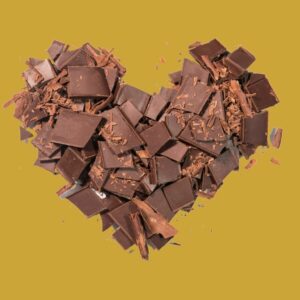
In November, Germans celebrate St. Martin–a knight who shared his cloak with a beggar–with a lantern-lit parade, sweets and steaming hot chocolate. And speaking of Germany… the German chocolate cake was named for Sam German, who developed a sweet bar for Baker’s Chocolate–and was not from Germany.
The French celebrate April Fool’s Day with chocolate-shaped fish, or “Poisson d’Avril.”
There are 72 chocolate holidays! *July 7th is named World Chocolate Day because supposedly Christopher Columbus brought the first beans to Europe that day. (This is debated, as noted above – it may have arrived by other people.)
Want to throw a chocolate pairing party? To show off your random facts? Check out How to Pair Whiskey, Bourbon or Scotch with Chocolate, and other posts with other pairing beverages such as coffee, wine, beer and tequila. You find them and more here: ALL THE CHOCOLATE. Want me to conduct the party and throw more fun facts in? Search for “Chocolate Pairing Adventure Mentor” or check my eventbrite page Stacey, Your Chocolate Adventure Mentor
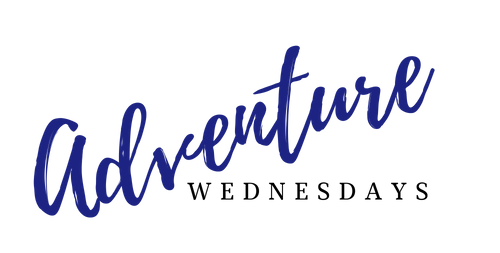
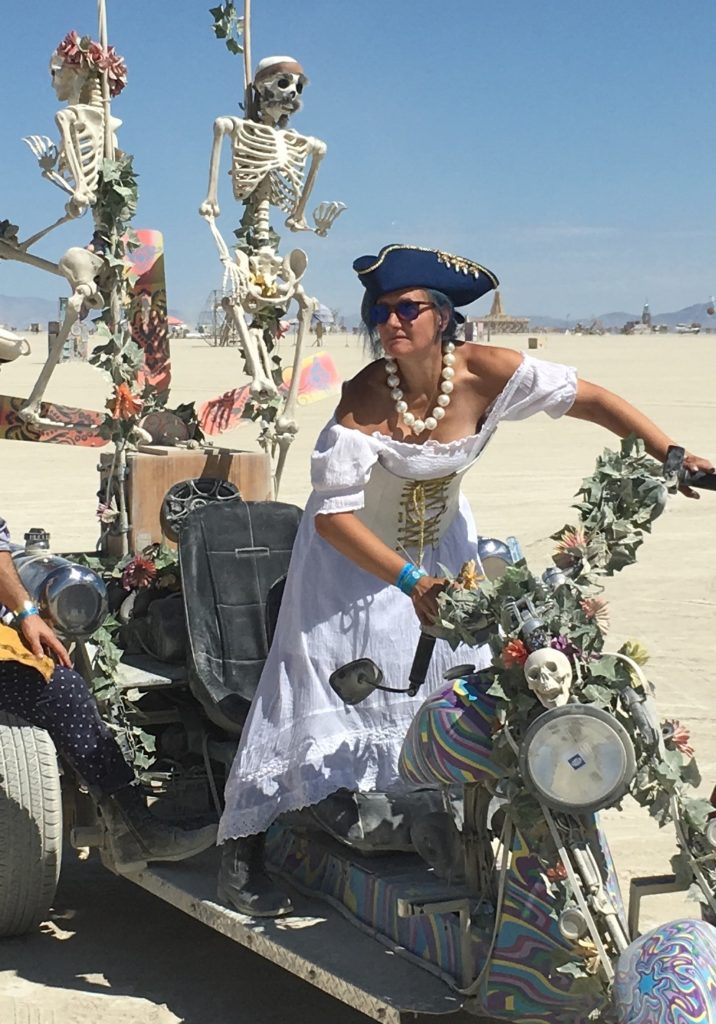 You need more fun & spontaneity in your life, and aren’t sure of next steps or the path to follow. Let’s connect! You could choose a free 15 minute chat, various courses, or even select one-to-one coaching.
You need more fun & spontaneity in your life, and aren’t sure of next steps or the path to follow. Let’s connect! You could choose a free 15 minute chat, various courses, or even select one-to-one coaching.
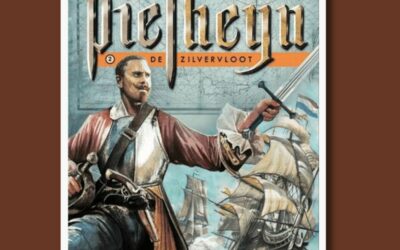
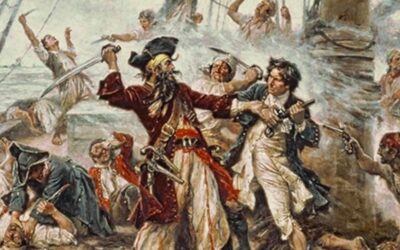
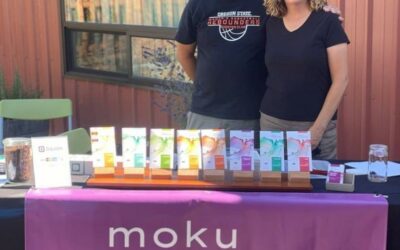
0 Comments